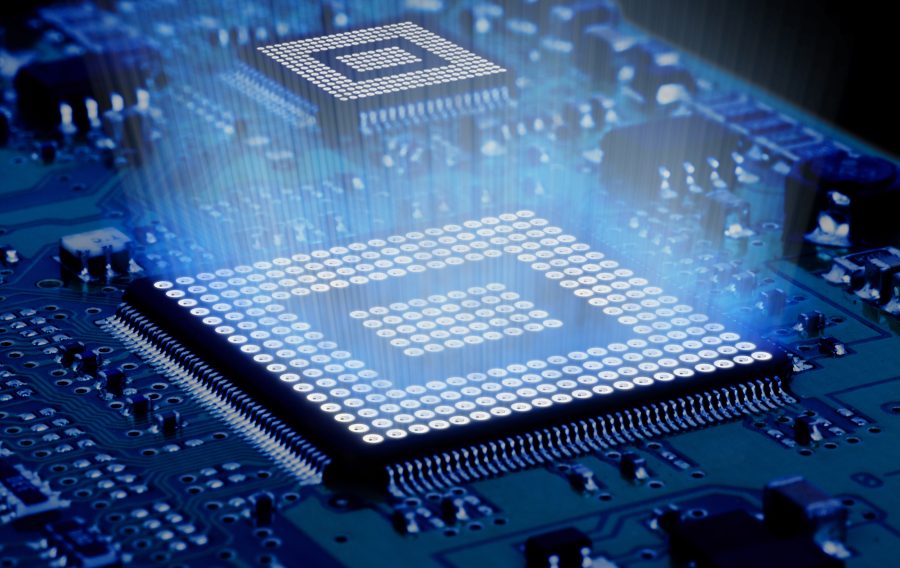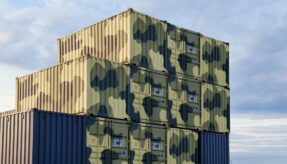
How the Defence Sector will continue to innovate through HPC: Even as Moore’s Law nears an end
High-Performance Computing (HPC), has become increasingly crucial in many parts of the defence manufacturing sector, enabling complex data analysis, simulating intricate processes, and optimising modelling and testing. For example, modelling aerodynamics in aircraft wing design, or innovating with materials in ballistics. Whilst immensely powerful, HPC faces several challenges as it responds to exponential demands for computational power. With the gradual lapsing of Moore’s Law, Owen Thomas, founder of Red Oak Consulting, argues that the defence sector will continue to thrive as HPC invariably moves to the cloud.
Moore’s Law, formulated by Gordon Moore in 1965, predicted that the number of transistors placed on a single square inch of an integrated circuit chip would double every two years, leading to exponential increases in computing power. It has had profound implications for the development of HPC, not least for defence, and the evolution of cloud computing more generally, reshaping the landscape of modern technology.
It is now well recognised that Moore’s Law is nearing its end, because of the physical limits to compressing processing power onto ever smaller chips reaches its limit. Since Moore’s Law’s entre, there has been about a trillion-fold increase in computing power used in predictive models. To improve these high-performance models further, we need ever greater computing power. But, with increasing costs and shrinking space available for the growing number of semiconductor chips involved in HPC compute, all sectors, including the military as it tackles challenges on land, sea and in the air, face a new dilemma.
HPC in practice in the defence sector
It’s true that HPC, often aligned with AI and machine to machine (M2M) communications has found its way onto the battlefield with ruggedised platforms processing petabytes of data from satellite or unmanned aerial vehicles (UAVs) for geospatial intelligence and mapping large areas. Likewise, computer on module standard HPC (COM-HPC) can increase the functionality of edge computing in command and control environments and communications.
However, it’s not just edge computing that’s utilising HPC, it’s within engineering and manufacturing that it continues to supply modelling for enhancements in aerospace, at sea, and on-the-ground innovation.
As Dr Roy Campbell, chief strategist for the department of defense (DoD) high performance computing (HPC) modernization program (HPCMP) says, “Removing bad designs and refining good ones early through virtual testing saves an extraordinary amount of time and money.” He notes that troubleshooting for the Sikorsky CH-53K King Stallion heavy-lift cargo helicopter revealed they were highly inefficient whenever they flew near the ground, because the helicopters were at low altitudes, engine exhaust was looping back into the engine and straining them. He suggested that the troubleshooting exercise probably saved more than $100M in testing.
HPC enables businesses across defence manufacturing industries to capitalise innovation, boost productivity, and maintain competitive advantage. Leveraging advanced technologies like cloud supercomputing, artificial intelligence, machine learning, and big data analysis, companies can craft products and services of greater value. For aerospace, HPC enables complex simulations and modelling, structural mechanics, and fluid dynamics, with detailed analyses of performance, including airflow patterns, stress distribution, and fuel efficiency.
Aside from the required innovation needed for battlespace, defence manufacturing is big business, and HPC will continue to play a pivotal role despite Moore’s Law no longer applying. In fact, in the US in September last year (2023) the DOD announced it was to invest “$238 million in CHIPS and Science Act funding for eight Microelectronics Commons regional innovation hubs”, while in 2022, Amazon Web services (AWS) and the MOD agreed a three-year deal to “bolster defence sector’s digital skills”.
Scalability has been key
The scalability and cost-effectiveness driven by Moore’s Law has significantly influenced the development of cloud computing. The ability to pack more transistors onto a chip has led to more powerful and affordable hardware, making it feasible for cloud service providers to offer robust computing resources at a lower cost whereby cloud computing leverages the principles of virtualisation and on-demand resource allocation. The technologies and innovation sitting behind Moore’s Law have empowered cloud providers to continually enhance their infrastructure, providing suppliers to the defence sector with the ability to scale up or down as needed.
Meanwhile, the rapid evolution of semiconductor technology has spurred innovation in cloud services. Cloud providers can leverage the latest hardware advancements to offer new and improved services to their users. This continuous cycle of innovation enhances the agility of cloud platforms, allowing them to adapt to changing technological landscapes.
While growth of HPC and the Cloud aligns with Moore’s predictions, it faces challenges such as physical limitations and the diminishing returns of miniaturisation. As transistors approach atomic scales, alternative technologies such as quantum computing may become necessary for sustaining the pace of progress.
The Implications of Moore’s Law
At one level, we could be forgiven for thinking that we are close to reaching the limits in available computational power. But actually, that’s not the case, indeed the Cloud will continue to be the principal catalyst for HPC’s growing impact across all sectors, so long as industry works smarter with the tools available to improve efficiencies and outcomes.
Much of that will be down to training, and much also down to funding. Crucially, it’s about understanding where the true power lies, where petabytes of data are processed in milliseconds, This is echoed in Red Oak Consulting’s industry report, ‘Incorporating the Cloud into the HPC Mix’, where the impact of HPC and the Cloud are explained in more detail.
Over time needs will evolve, as does the nature of support required. What is critical, however, is that as the defence manufacturing sector evolves with HPC in extracting the maximum benefits. Tomorrow’s battlespace depends on it.
If you would like to join our community and read more articles like this then please click here








